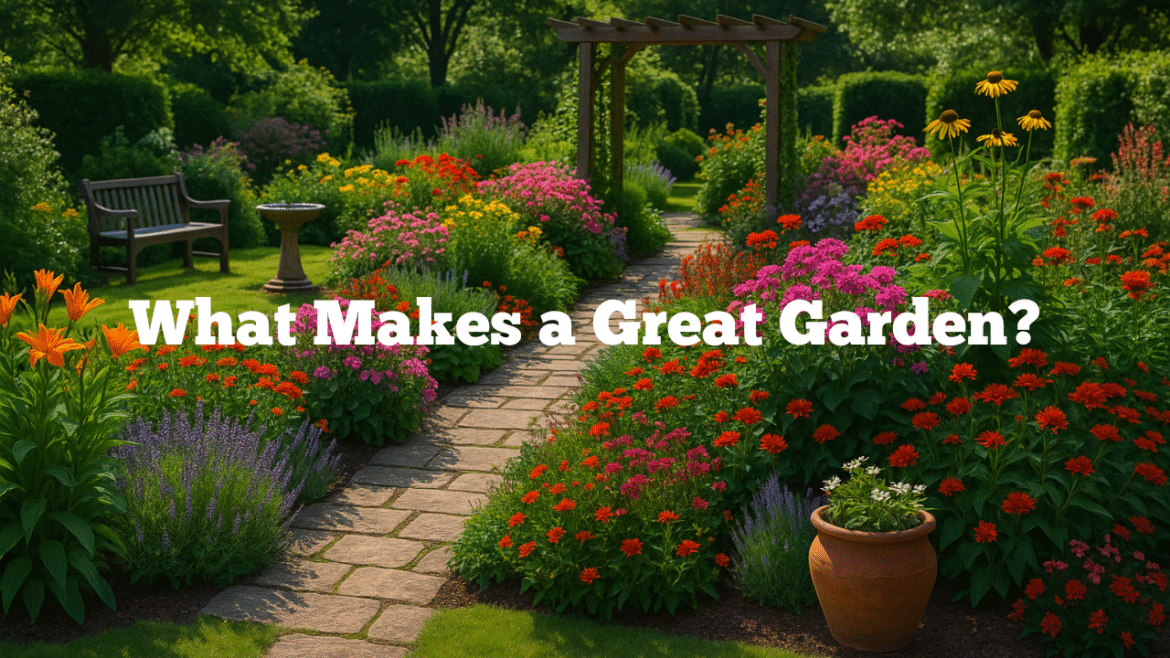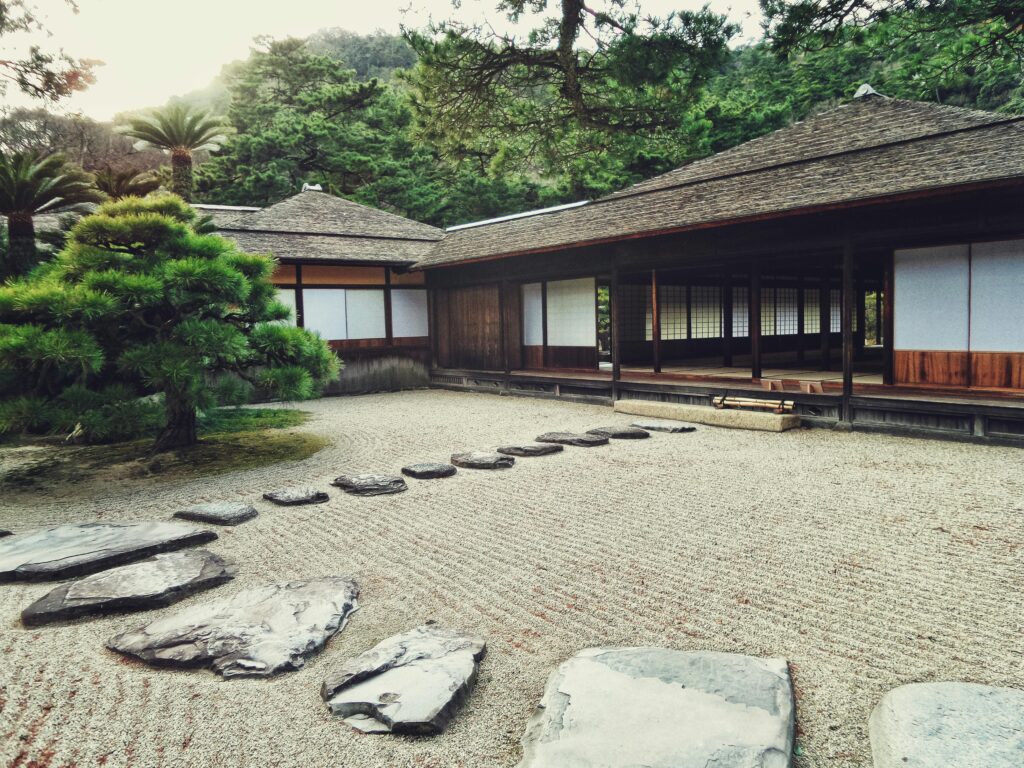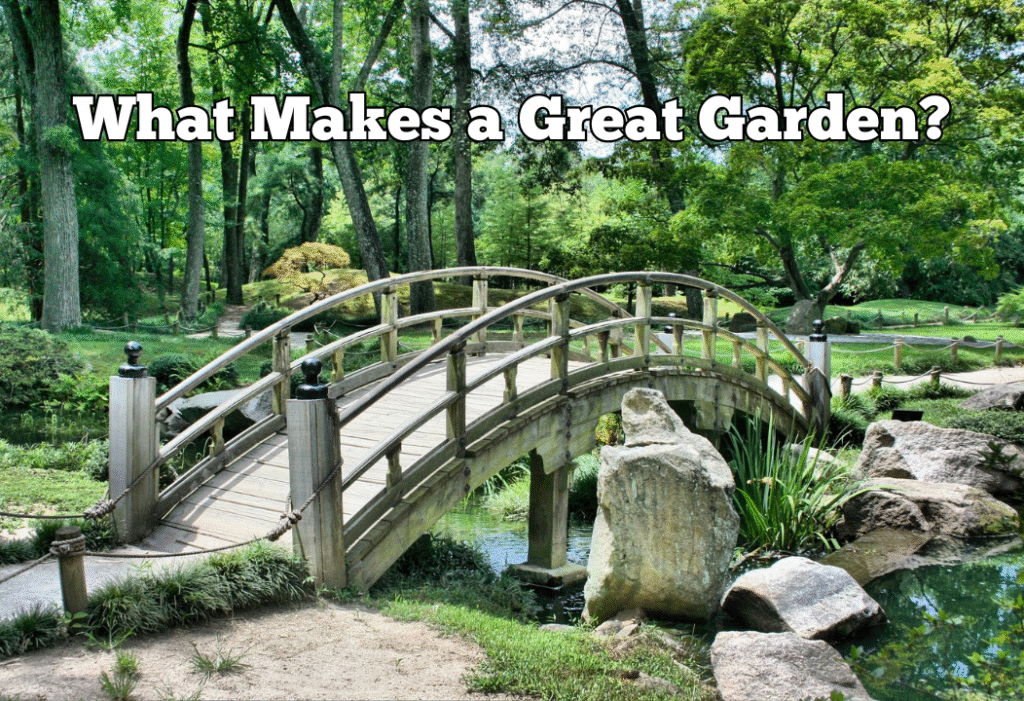
A great garden is more than just a collection of plants—it is a carefully designed, thoughtfully maintained space that brings joy, beauty, and function to those who experience it. Whether it serves as a peaceful retreat, a vibrant gathering place, or a productive landscape for growing food, a well-designed garden harmonizes nature, aesthetics, and practicality. This essay explores the essential elements that contribute to a truly great garden, from design principles and plant selection to sustainability and personal creativity.
1. Thoughtful Design and Planning
A great garden begins with a strong foundation of planning. Before a single plant is placed in the ground, the layout, purpose, and style of the garden must be considered. Several key aspects contribute to a well-designed garden:

1.1 Purpose and Function
Gardens serve different purposes depending on the needs and preferences of the gardener. Some common garden types include:
- Ornamental Gardens – Designed primarily for beauty, these gardens feature a mix of flowers, shrubs, and trees arranged for visual impact.
- Wildlife Gardens – Focused on attracting birds, bees, butterflies, and other wildlife, these gardens incorporate native plants, water sources, and shelter.
- Kitchen Gardens – Also known as potagers, these gardens are designed for growing vegetables, herbs, and fruits.
- Zen or Meditation Gardens – Inspired by Japanese aesthetics, these gardens use elements like raked sand, stones, and minimalist plantings to create a peaceful retreat.
- Formal vs. Informal Gardens – A formal garden features symmetry, structured pathways, and neatly clipped hedges, while an informal garden embraces a naturalistic, free-flowing arrangement.

1.2 Layout and Spatial Organization
Good spatial planning ensures that a garden is functional, aesthetically pleasing, and easy to maintain. Key considerations include:
- Balance and Proportion – Plants, structures, and pathways should be arranged in a way that feels harmonious and well-balanced.
- Focal Points – Features such as statues, water fountains, or a particularly striking plant can serve as focal points that draw the eye.
- Pathways and Accessibility – Thoughtfully designed pathways enhance movement and flow within the space while adding structure to the garden.
- Zones and Layering – Creating zones for different functions (e.g., a relaxation area, a vegetable patch, a wildflower meadow) ensures a diverse and engaging garden.
1.3 Seasonal Interest and Year-Round Appeal
A great garden provides visual interest throughout the year. This can be achieved by:
- Selecting Plants for Each Season – Spring bulbs, summer perennials, autumn foliage, and winter evergreens ensure year-round appeal.
- Incorporating Structural Elements – Arbors, trellises, sculptures, and decorative pots add aesthetic interest even when plants are dormant.
2. The Right Plant Choices
A well-planted garden combines a variety of species that complement each other and thrive in the given climate and soil conditions.
2.1 Native and Adapted Plants
Using native or climate-adapted plants is a hallmark of a great garden. Benefits include:
- Resilience – Native plants are naturally suited to local conditions and require less maintenance.
- Wildlife Support – They provide essential food and habitat for pollinators and other beneficial creatures.
- Lower Water and Fertilizer Needs – Adapted plants often thrive with minimal human intervention.
2.2 Diversity and Biodiversity
A mix of different plant types—trees, shrubs, perennials, annuals, and ground covers—creates a rich and dynamic environment.
- Color Combinations – Complementary and contrasting colors create visual impact.
- Textures and Forms – Combining fine and coarse foliage, upright and trailing forms, adds depth to the garden.
- Companion Planting – Certain plants grow better together, benefiting from natural pest control and improved soil health.
2.3 Edible and Useful Plants
Many great gardens incorporate edible elements, such as:
- Fruit Trees and Berry Bushes – Provide seasonal harvests and ornamental value.
- Culinary Herbs – Easy to grow, fragrant, and practical for cooking.
- Medicinal Plants – Herbs like chamomile, lavender, and mint offer health benefits.
3. Sustainability and Eco-Friendliness
A truly great garden is one that works in harmony with nature rather than against it. Sustainable gardening practices reduce environmental impact and create a healthier ecosystem.
3.1 Water Conservation
- Drought-Tolerant Plants – Reduce the need for excessive watering.
- Rainwater Harvesting – Collecting rainwater for irrigation is an eco-friendly practice.
- Mulching – Retains soil moisture and suppresses weeds.
- Drip Irrigation Systems – Efficiently water plants while minimizing waste.
3.2 Soil Health
Healthy soil is the foundation of a thriving garden. Sustainable soil practices include:
- Composting – Recycles organic waste into nutrient-rich soil.
- Mulching – Protects soil structure and provides nutrients.
- Crop Rotation – Prevents soil depletion and pest buildup.
3.3 Organic Pest and Disease Management
A sustainable garden avoids chemical pesticides and fertilizers, opting instead for natural solutions:
- Beneficial Insects – Ladybugs, lacewings, and predatory wasps help control pests.
- Companion Planting – Some plants deter pests naturally (e.g., marigolds repel nematodes).
- Physical Barriers – Netting, row covers, and fences protect plants from pests.
4. Hardscaping and Structural Elements
In addition to plants, a great garden includes well-integrated structural elements that enhance its beauty and function.
4.1 Pathways and Borders
Paths guide movement through the garden and define different areas. Materials include:
- Gravel or Stone – Natural-looking and low-maintenance.
- Brick or Pavers – Provide a more formal aesthetic.
- Wood Chips or Mulch – Affordable and environmentally friendly.
4.2 Seating and Gathering Areas
A garden should offer places to relax and enjoy the space. Options include:
- Benches and Swing Seats – Provide cozy spots for contemplation.
- Pergolas and Gazebos – Offer shade and architectural interest.
- Fire Pits and Outdoor Kitchens – Enhance outdoor living and entertaining.
4.3 Water Features
Water features add movement, sound, and tranquility to a garden. Popular options include:
- Fountains – Create soothing background noise.
- Ponds – Support aquatic plants and wildlife.
- Streams and Waterfalls – Add natural beauty and cooling effects.
5. Personal Touches and Artistic Expression
A great garden reflects the personality and creativity of its creator. Unique touches can transform an ordinary garden into something truly special.
5.1 Garden Art and Decorative Elements
Incorporating artistic elements enhances visual interest:
- Sculptures and Statues – Serve as focal points.
- Decorative Pots and Planters – Add charm and variety.
- Mosaic Pathways and Painted Rocks – Introduce color and personality.
5.2 Themed Gardens
Some gardeners create themed gardens based on their interests, such as:
- Cottage Gardens – Overflowing with colorful flowers and whimsical charm.
- Japanese Gardens – Minimalist, meditative spaces with rocks and water.
- Fairy or Fantasy Gardens – Incorporate miniature elements for a magical touch.
6. Ongoing Care and Maintenance
A garden requires regular upkeep to stay healthy and beautiful. Essential maintenance includes:
- Weeding and Pruning – Keeps plants tidy and prevents overcrowding.
- Fertilizing and Soil Amendments – Ensures plants receive the nutrients they need.
- Pest and Disease Management – Monitors and controls garden health naturally.
- Seasonal Cleanups – Prepares the garden for changing seasons.
Conclusion
A great garden is a combination of thoughtful design, diverse and well-chosen plants, sustainable practices, artistic elements, and ongoing care. Whether large or small, formal or wild, a successful garden balances aesthetics, function, and ecological responsibility. When planned and maintained with passion, a garden becomes a living masterpiece that enriches the lives of those who experience it.
Check out these books on Great Gardens on Amazon by clicking here.
If you liked this article on What Makes a Great Garden? please share it with your friends and family, and then check out more of our articles on Homes and Gardens.
.

Great article